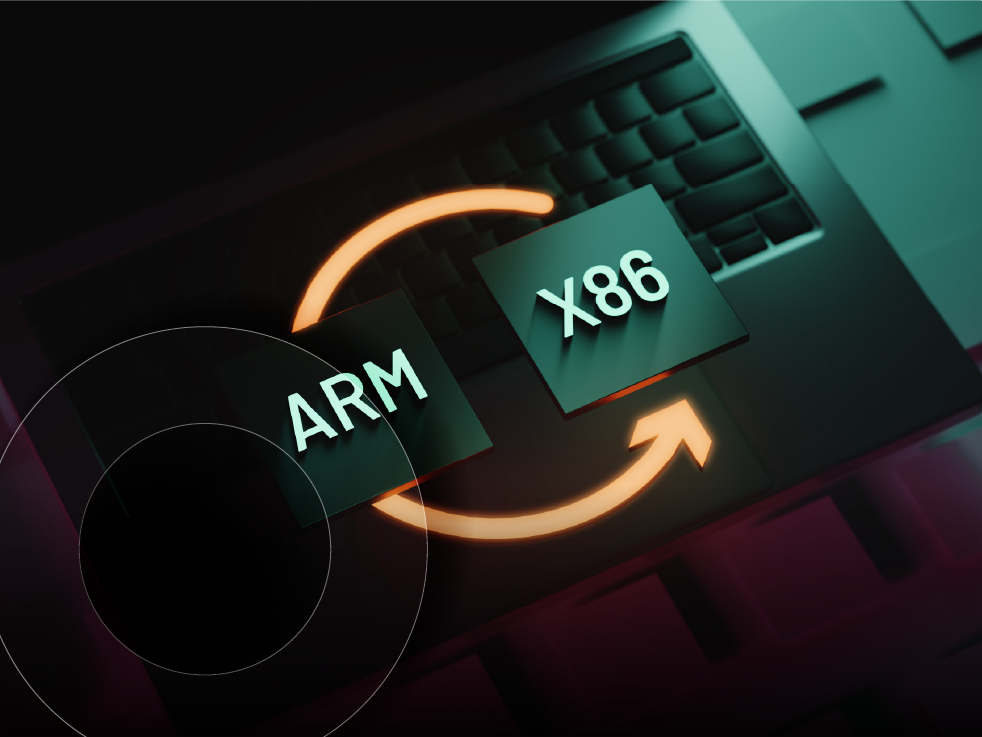How does virtual desktop infrastructure fare in an AI world?:
AI-powered devices will make a big impact on VDI environments – whether you’re ready or not.

For years, virtual desktop infrastructure (VDI) has improved your security, scalability, and flexibility by centralizing the way your organization manages and deploys desktop environments.
But now, artificial intelligence (AI) is integrating into end-user devices, presenting new challenges for your VDI environments – and creating new expectations for the type of workloads processed at the endpoint.
What impact will local AI processing have on your VDI environments, and what changes can you expect AI to bring to your endpoints?
The role of AI-powered devices in VDI
Traditionally, VDI has depended on powerful servers to give users access to virtual desktop experiences, providing security and flexibility for ever-expanding workloads and use cases.
However, the introduction of AI PCs and AI-powered devices – computers equipped with hardware-level AI capabilities – brings a significant shift. Leveraging new neural processing units (NPUs) and better-integrated graphical processing units (GPUs), these devices process AI workloads locally – resulting in better performance, better security, and reduced data center costs compared to AI workloads offloaded to backend servers.
When these same workloads are executed in a VDI environment, all processing takes place on your servers, potentially impacting performance for all users. Traditionally, the solution to this performance drop has been to reduce the number of users per server.
How can VDI providers adapt their architecture for AI?
AI-powered devices deliver important productivity and accessibility features such as background blur in video meetings, improved noise cancellation, optical character recognition (OCR), and speech-to-text. These type of burst workloads are only effective with enough local processing. If these processes were to instead happen on the server, there could be a significant impact on your VDI systems.
In the past, leading VDI providers faced a similar challenge for multimedia workloads. Back then, their solution was to redefine the architecture to offload those workloads to the client access device. It remains to be seen if this same approach can effectively enable VDI platforms to handle AI workloads.
Can AI help maintain density and performance?
 SHI Field CTO Dave Gruver observes a key challenge for organizations: in VDI environments, advancements in desktop capabilities and user expectations are reducing user density per core and server. This trend raises operational costs and necessitates a reevaluation of resource allocation strategies.
SHI Field CTO Dave Gruver observes a key challenge for organizations: in VDI environments, advancements in desktop capabilities and user expectations are reducing user density per core and server. This trend raises operational costs and necessitates a reevaluation of resource allocation strategies.
“Could AI capabilities influence user density?” Dave ponders. “And how far away are NPU-enabled thin clients capable of offloading workloads from central servers?”
Offloading tasks to AI-powered devices, Dave says, could maintain user density without compromising performance.
Jim Joseph, SHI’s Global Sales Cybersecurity Advisor, further suggests organizations can more efficiently leverage AI capabilities by reversing the workflow used in high-level VDI GPU processing. By reallocating certain processing tasks to local endpoints, organizations could optimize resource utilization while enhancing user experience.
The integration challenges ahead
 Despite these benefits, integrating AI PCs, AI-powered devices, and NPUs into VDI environments poses several challenges. Traditional performance monitoring tools may not be sufficient for virtualized environments, with new tools and benchmarks required to accurately measure and manage performance from this new category of hardware.
Despite these benefits, integrating AI PCs, AI-powered devices, and NPUs into VDI environments poses several challenges. Traditional performance monitoring tools may not be sufficient for virtualized environments, with new tools and benchmarks required to accurately measure and manage performance from this new category of hardware.
And because this hardware-level AI is so new, organizations may find compatibility issues when trying to integrate NPUs into existing VDI setups. Careful planning and testing are needed to ensure your current environment functions as intended with AI-powered devices.
Potential integration strategies
By performing specific tasks locally with endpoints, organizations can reduce the burden on central servers, thereby maintaining performance levels even as user densities fluctuate. This approach not only optimizes resource usage, but also enhances end-user responsiveness.
 SHI’s Sr. Director of End User Compute, Adam Reiser, emphasizes the importance of collaboration with VDI providers such as Citrix, Microsoft, Omnissa, and VMware by Broadcom to understand how these platforms can effectively support AI workloads. Engaging with these providers will be crucial for developing strategies that integrate AI capabilities into existing VDI frameworks.
SHI’s Sr. Director of End User Compute, Adam Reiser, emphasizes the importance of collaboration with VDI providers such as Citrix, Microsoft, Omnissa, and VMware by Broadcom to understand how these platforms can effectively support AI workloads. Engaging with these providers will be crucial for developing strategies that integrate AI capabilities into existing VDI frameworks.
When integrating AI into your VDI environments, focus on:
- Developing new management tools that dynamically allocate resources based on real-time usage patterns.
- Exploring the cost implications of integrating AI-powered devices into VDI environments.
- Enhancing your security posture with advanced security protocols that utilize AI for continuous monitoring and anomaly detection.
- Using AI to scale resources efficiently based on real time demand and reduce costs from underutilized infrastructure.
Integrate like a pro with SHI
AI-powered devices are set to transform VDI’s user experience and capabilities by offloading AI workloads to NPUs. This shift can reduce resource demands on central servers, optimize resource usage, and improve end-user productivity.
But to get there, you need to overcome challenges such as maintaining user density, managing costs, and ensuring compatibility with existing setups.
That’s where SHI’s industry expertise can help. Our teams of engineers and solution architects leverage decades of VDI and end-user computing (EUC) experience to help you build an informed, holistic plan for deploying and adopting AI devices into your existing environment. Our proven experience and top industry partnerships ensure your VDI environments are successful in the AI world.
To learn more about how SHI can help future-proof your VDI systems, contact our experts today.
As SHI’s Field CTO, Dave Gruver drives technical strategies and delivers effective solutions for our customers. Dave has over 30 years’ experience in enterprise IT and takes pride in helping organizations rapidly transform their technologies and processes to best support hybrid workforces.
As Global Sales Cybersecurity Advisor, Jim Joseph collaborates with SHI customers to identify opportunities for developing custom solutions with SHI, effectively bridging the gap between technology and business. He brings a wealth of experience from working with leading organizations such as Palo Alto Networks, Google, and VMware, transforming business ideas into technical outcomes.
With a proud 20+ year history at SHI, Adam Reiser is the Director of our End User Compute practice. His team includes pre-sales support and partnerships for all business units and top EUC partners worldwide.




